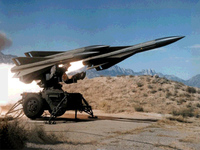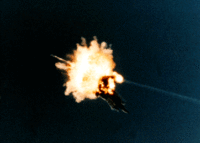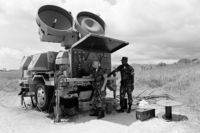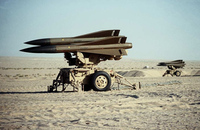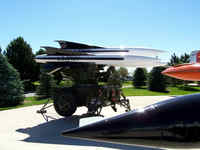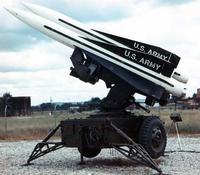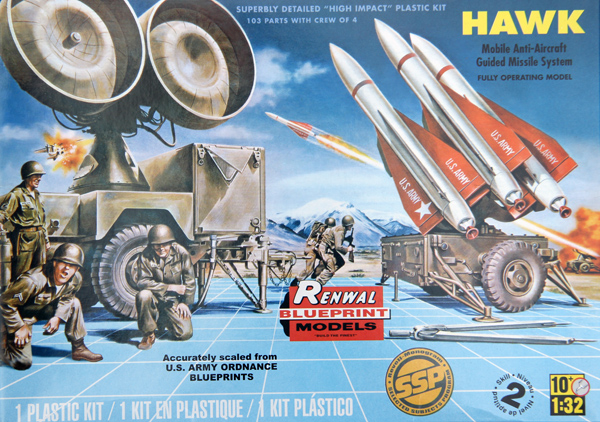
Revell/Renwal 1/32 Hawk Missile Battery
By Mike Whye
Apparently Revell finds re-issuing the Renwal kits from the 1950s and 1960s to be rewarding because Revell keeps issuing repops of some of those classic kits. The latest re-issue, the 1/32 mobile Hawk Missile anti-aircraft unit (Revell #85-7813), is one of what Renwal said were its "Blueprint Models" and the kit's box top art is basically what Renwal used years ago.
In their day, the Renwal kits were just a few dollars each. Now, they're costlier but the Revell repops are less expensive than what the original Renwal kits are on eBay. For example, an original Renwal Atomic Cannon was recently listed for nearly $300 on eBay while the Revell re-issue retails for $57.
The Hawk Missile System
Since their inception, the Hawks have, like many military systems, gone through changes and upgrades to their power and guidance systems plus their warheads and fuses. Initially the Hawks were guided by semi-active radar systems that homed in on radar waves generated by radar units. Some have reportedly been designed to use infra-red tracking systems. Their efficiency also improved, from a single-shot kill rate of 56 percent to 85 percent, as reported by Jane's Information Group.
The first version of the Hawks, officially known as MIM-23, had a range of 16 miles, a ceiling of 36,000 feet and a 120-pound warhead. Later ones could range out to 22 miles, up to 59,000 feet and had warheads weighing 165 pounds. A Hawk can fly up to Mach 2.4. Cost was $250,000 each.Although the U.S. never fired a Hawk in anger, other countries have. Ironically, its first kill was a friendly aircraft; that occurred when an Israeli Hawk battery shot down an Israeli fighter about to crash into that country's nuclear research center in the summer of 1967. About two years later, Israeli Hawks downed at least 12 Egyptian warplanes. During the 1973 Yom Kippur War, Israeli Hawks shot down between one and two dozen enemy aircraft. Kuwait, Iran and France have also shot down various planes with the Hawks and their variants. The Hawks were mounted in threes and transported on towed trailers or tracked vehicles. These were accompanied by other vehicles that carried the radar equipment and personnel.
The Kit
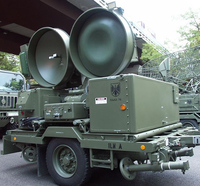
Many parts have several ejection pin marks but I don't think any will show once everything is assembled. The only sink mark I saw that might be visible is on Part 9, a side panel on the missile launcher trailer although a small dab of putty should handle that easily. The trailers' parts look good although they're not as crisp as what one would expect from kits made in recent years. The parts for the missiles look pretty good with six parts making up each Hawk.
Painting
The missile bodies are to be painted white with red or olive drab wings, according to the instructions. The only photo I can find of a Hawk painted white with red wings is one that was being carried by an Iranian F-14. Also, I did not find any color pictures of Hawks with white bodies and olive drab wings although many color photos show Hawks with white bodies and black wings; some Vietnam-era photos show Marine Hawks with white bodies, black wings and tan or cream-colored warheads with "U.S. Marines" stenciled on their bodies.Some Marine Hawks can be seen at the USMC Hawk Association Site and the Military Photos site.
Other color photos show Hawks painted overall with a green similar to olive drab but a shade that's slightly darker than the OD paint used on the trailers; some show olive drab Hawks with black warheads. At least one photo shows a trio of Hawks painted what looks broad dark green camouflage stripes across the gray bodies and wings.Instructions and Decals
The instructions are a 12-page booklet and all the drawings are easy to understand. A parts list that occupies an entire page identifies each part. The paints are clearly called out by name, no FS numbers are mentioned, but how much more detailed does one have to be other than mentioning parts are to be painted brown, flat and semi-gloss black, flat white, red, silver, yellow, flesh and olive drab.
All markings are for the U.S. Army with no U.S. Marines markings so if you want to make a USMC Hawk battery, you'll need to do some scrounging.
Miscellaneous
Although one would more than likely position the trailers near each other, on a model shelf or diorama, I doubt they were ever positioned that way when operational and ready to fire because the blast from the missiles being launched would obviously interfere with the radar unit. In looking at various photos, I have yet to see radar trailers positioned near the missile launchers other than when set up for display.
Conclusion
If you want a Hawk missile battery, this is the kit to get. Although you're basically looking at a 1950s-1960s kit that does not match the quality of Tamiya, Hasegawa, Trumpeter and Revell's recently-made kits, it's worth the buy and it should be an easy build that will take a few evenings. Revell says this re-issue is a one-time only affair so get the kit while you can from your favorite dealer.
The kit retails for $27.95. Thank you to Revell for sending it in for review.

